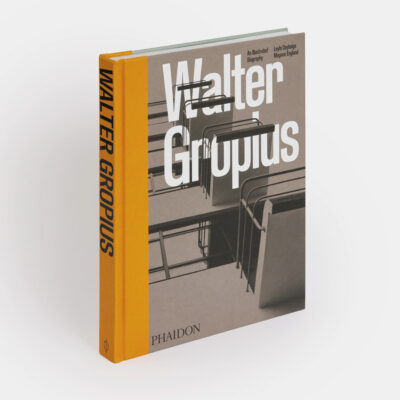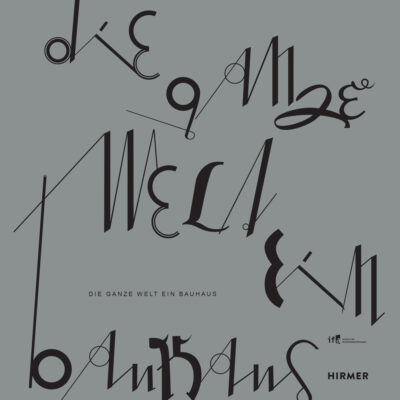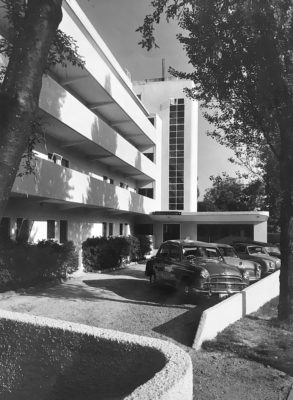A must-have book,
‘Walter Gropius: An Illustrated Biography’
Any consideration of Modernist design, in fact, the direction of design since the establishment of the Bauhaus has been deeply influenced by the genius of Walter Gropius. A new biography by Leyla Daybelge and Magnus Englund tells Gropius’ amazing story

Walter Gropius, Spain, circa 1907. (page 28) Originally published in Gropius: An Illustrated Biography of the Creator of the Bauhaus, Reginald Isaacs, Bullfinch Press, 1991. In 1907, Gropius received a substantial inheritance from a great-aunt. He left the Technische Hochschule without completing his examinations and spent a year travelling around Spain with his friend Helmuth Grisebach
In their ‘Isokon and the Bauhaus in Britain’ Magnus Englund and Leyla Daybelge showed us how Britain’s modernist heritage is profoundly enriched by the Isokon Building, aka Lawn Road Flats in Hampstead. It wasn’t just a revolutionary design in ‘30s London but an expression of a social ideology, to architecturally fix a new way of communal living. The Isokon became a centre for the avant-garde and for Walter Gropius and the Bauhaus in its London exile. Leyla and Magnus have now authored a large format, sumptuously illustrated biography of Walter Gropius, the founder of the Bauhaus, ‘Walter Gropius: An Illustrated Biography’. It’s packed with photographs, many not previously seen and others not at all well known, as well as drawing on letters and sources undiscovered or unexplored by previous biographies. The book follows the extraordinary life of Gropius from his traditional Prussian youth before the Great War, through his service in the horrors of the Western Front and the founding of the Bauhaus. The book details Gropius’ exile from Germany following the election of the Nazis and the forced closure of the Bauhaus, his time in London and then his fruitful years in the US, his enormous influence on the next generation of designers and architects and that continued influence.
Leyla Daybelge has a background in news and current affairs journalism and broadcasting and is a well-known writer on travel and culture. Magnus, also a writer, is from a retailing and design background; he founded the Skandium interior design store chain.
Since we opened ‘Walter Gropius: an Illustrated Biography’ we’ve been learning and made to think anew about much of this giant of twentieth-century design. So we were so pleased to put some questions to Leyla and Magnus, now, undoubtedly, leading commentators on modernism and the Bauhaus. Asked what is the lasting influence of Walter Gropius, said, ‘First and foremost, the curriculum for post-war design and architecture schools, lasting to this day, where creativity and experimentation is allowed, instead of top-down feeding of established facts to the students. Then it’s the linking of art, design and architecture, making it parts of a whole. He had the vision to see this very early on.’

You and Magnus have different backgrounds, and both have different successful careers; how did you meet and decide to collaborate?
We were introduced by a mutual friend, Adrian Pritchard, grandson of Jack Pritchard, who commissioned the Isokon Flats in Hampstead. We were both fascinated by the rich history of the building and its celebrated residents. At the time, Magnus was living in the Penthouse. We also discovered we shared a some-might-say nerdish interest in the world of 1930s design.
You have previously, together, written “Isokon and the Bauhaus in Britain”, was it during that project that you decided to write “Walter Gropius an Illustrated Biography”?
During the research for our first book, we became aware that little was known of Gropius’ life in Britain. He lived in London at the Isokon Flats in Hampstead, from October 1934-March 1937 at the centre of an extraordinary artistic community. Often in accounts of his life, this period is entirely ignored, skipping from his life in Berlin as an independent architect after he left the Bauhaus, directly to his role as the head of the Graduate School of Design at Harvard.
Initially, we considered writing a book about Bauhaus buildings in Britain but were commissioned by Phaidon to write a Gropius biography, with a brief to include as much visual material as possible, which, as it transpired, was a much more interesting project.
What, to you, is the importance of Walter Gropius, not just in terms of architecture and design but more widely as well?
Gropius is best known as a pioneer of Modern architecture and the Founder of the Bauhaus, the world’s most important and influential school of design and architecture. First in Weimar and then in Dessau, rather like a premier league football manager assembling a dream team, he put together a world-class teaching faculty, employing leading artists including Paul Klee, Wassily Kandinsky, László Moholy-Nagy, Josef and Anni Albers, Marcel Breuer and Marianne Brandt. The Bauhaus graduates, in turn, helped change the face of 20th-century design. Many dispersed globally, in the run-up to the Second World War and their work influenced architecture, art, furniture design, graphics, textiles, ceramics and theatre design. Later, as head of the Graduate School of Design at Harvard University, Gropius inspired a new dynasty of architects, including IM Pei, Philip Johnson and Harry Seidler.
There are a number of books about Gropius; what does your biography add?
We aimed to produce the first in-depth biography, which anatomizes not just Gropius, the man and the architect, but also the product designer, the educator and the mentor. We have included new material on his time living in London, which is often overlooked and also his later years in the US working at Harvard and in the TAC partnership. Produced in a large format, our biography has almost 400 images, including plans, drawings and blueprints, but also previously unpublished private photographs, correspondence, ID documents, menus, ephemera and contracts. Phaidon has done a beautiful job with the book’s design.

Chapter 7: USA and the World, 1952-1969. Clockwise from left: Walter and Ise visiting Britz-Buckow-Rudow in Berlin, June 1968; Drawing for the community centre at the Britz-Buckow-Rudow development; Drawing for the shopping street at the Britz-Buckow-Rudow development (pages 282-283)
Gropius was married for some years to Alma Mahler; how influential was she on his ideas and career? Do you feel she has been well represented in the Gropius and Bauhaus story? Have her personal achievements and talents been overlooked because she was a woman?
Alma Mahler grew up in a bohemian Viennese household and was a gifted amateur musician and composer. Her ambitions were largely thwarted by her first husband, the composer Gustav Mahler, whom she married at the age of 22. Nineteen years her senior, he belittled her efforts and demanded that Alma put her talents on one side to support his career instead. A complex and passionate woman, she became a muse to a string of important 20th-century artists, amongst them, Gropius, an architect, the painter Oskar Kokoschka and writer Franz Werfel (her third husband). During the early stages of their marriage, she drove Gropius on relentlessly – ambitious for his, and by extension her own, success. However, rather than influencing his ideas per se, her social status and the artistic Viennese circles she frequented, were important for Gropius’ career. For example, it was at one of her soirees that he met the controversial artist Johannes Itten, whom he would later employ to run the Preliminary Course at the Weimar Bauhaus.
In recent years the image of Gropius as dry has been contradicted; so you consider that he was passionate, emotional? What was his personality like?
We can’t quite put our finger on where that image of Gropius came from, maybe because he didn’t hold the egos of Mies or Corb but instead worked as part of groups, both in his various practices and at the Bauhaus. But it doesn’t make him a dry person, just more diplomatic. It’s quite clear from his love life, not just with Alma Mahler but also with other women, that he was deeply passionate, and he surrounded himself with some of the greatest artists of the 20th century.
How did you research the biography? How long did the book take to write?
We used a large number of previous books, probably a hundred, and then went deep into the various archives in Germany, Britain and the US that hold original material. We also spoke to members of the Gropius family and people who worked at TAC, his last firm. It took us the best part of two years.
How do you write together? What are the mechanics?
It starts off with a shared journey down quite obscure rabbit holes, tracing the unknown or the obscure, until we start to frame the many parts into a narrative. It’s a book rich in illustrations, and we prefer images that brings out the human side where possible.
Would you have liked Gropius? Do you admire him just for his design genius?
Yes, we think he would have been a wonderful person to be stranded with on a desert island! He seems warm, funny and generous but also very serious and sometimes sad, as he faced so many obstacles and hardships in his life. He comes across a man with a good moral compass, who cared about people and the world around him.,
If the Nazis had not come to power, what would have happened to the Bauhaus and Gropius?
The Bauhaus would not have left Weimar for a start, which means that the famous buildings in Dessau would never have been built. He would probably not have left the school in 1928, and never left for England and then for America. Modernism under a democratic Germany would have developed during the 1933-1945 period uninterrupted and benefitted many people who instead came to suffer or even die.

Chapter 5: London, 1934-1937. Clockwise from top left: Gropius and Fry, Dormitory Block, Christ’s College Cambridge, 1935–6; Menu card and seating plan for a dinner in Gropius’ honour at the Trocadero restaurant in Piccadilly, London on 9 March 1937; Departing England, Walter and Ise were bid farewell at Waterloo Station in London by Moholy-Nagy and Jack and Molly Pritchard on 12 March 1937; Gropius and Fry, Mortimer Gall Electricity Centre, Cannon Street, London, 1937 (page 198-199)
What are your three favourite works of Walter Gropius?
There are some key buildings, of course, like the Werkbund building, Fagus factory and Dessau school. But personal favourites include the wooden Sommerfeldt house in Berlin (destroyed in WWII), the American embassy in Athens, and the Brutalist glass factory for Rosenthal.
Have you decided on a new project?
Yes, we have two equally exciting books under discussion, and if both happen, we will be very busy for the next few years. Both are about people who combined architecture and furniture design, and one is a woman, but that’s as much as can say at this stage!
Published by Phaidon ‘Walter Gropius: An Illustrated Biography’ is available from the Greyscape shop.




















